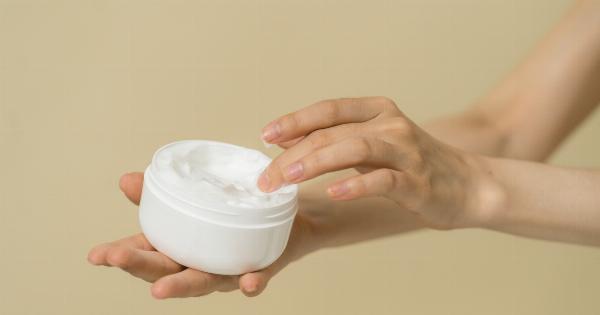Dealing with muscle pain can be incredibly frustrating. It can hinder your daily activities, affect your mood, and even disrupt your sleep. While medications can provide relief, they often come with unwanted side effects and long-term reliance.
Fortunately, there are several effective methods for soothing muscle pain without the need for medications. In this article, we will discuss ten of the best non-medication approaches to alleviate muscle pain.
1. Heat Therapy
Applying heat to sore muscles is a classic method for soothing pain. Heat helps improve blood circulation, relaxes muscles, and promotes healing.
You can use a heating pad, warm compress, hot water bottle, or take a warm bath to provide relief to your achy muscles. Make sure to wrap the heat source in a cloth to prevent burns, and limit heat exposure to 15-20 minutes at a time.
2. Cold Therapy
If you’re experiencing acute muscle pain or inflammation, cold therapy can be immensely helpful. Applying ice or a cold pack to the affected area can reduce swelling, numb pain, and provide a numbing effect.
Always wrap the ice pack in a thin cloth to protect your skin, and limit cold exposure to 10-15 minutes at a time. Cold therapy is particularly beneficial for injuries such as sprains or strains.
3. Stretching Exercises
Regular stretching exercises can help ease muscle pain and prevent future discomfort. Stretching enhances flexibility, reduces muscle tension, and improves blood flow to the affected area.
Focus on stretching the specific muscles that are causing you pain. Incorporate dynamic stretches before your workout or physical activity and static stretches after to lengthen the muscles. Remember to perform stretches gently and avoid bouncing or overexertion.
4. Massage Therapy
Massage therapy is a fantastic way to relieve muscle pain and tension. It promotes relaxation, enhances blood flow, and releases endorphins, which are the body’s natural painkillers.
You can seek a professional massage therapist or use self-massage techniques such as foam rolling or using a handheld massager. Experiment with different massage techniques like Swedish massage, deep tissue massage, or trigger point therapy to find what works best for your muscle pain.
5. Essential Oils
Many essential oils have analgesic and anti-inflammatory properties, making them a great alternative to medications for muscle pain relief. Lavender, peppermint, eucalyptus, and chamomile essential oils are particularly effective.
Dilute a few drops of essential oil with a carrier oil like coconut oil, and gently massage the mixture into the affected area. Alternatively, you can add a few drops of essential oil to your bathwater or use a diffuser to inhale the soothing scent.
6. Yoga and Pilates
Engaging in yoga or Pilates can be highly beneficial for managing and alleviating muscle pain. These practices improve strength, flexibility, and posture, while also promoting relaxation and stress reduction.
Certain poses and exercises specifically target different muscle groups, helping to release tension and increase flexibility. Join a local class, follow online tutorials, or use mobile apps to get started with yoga or Pilates at home.
7. Acupuncture
Acupuncture is an ancient Chinese technique that involves inserting thin needles into specific points on the body. It helps balance energy flow and stimulates the release of natural pain-relieving chemicals.
Numerous studies have shown the effectiveness of acupuncture in reducing chronic muscle pain. Consult a licensed acupuncturist to get a personalized treatment plan based on your specific condition.
8. Exercise and Physical Activity
Engaging in regular exercise and physical activity is essential for maintaining overall muscle health and reducing pain.
Low-impact activities like swimming, walking, or cycling help increase blood flow, build strength, and enhance flexibility without putting excessive strain on your muscles and joints. Consult with a healthcare professional or a certified trainer to develop an exercise program that suits your fitness level and specific needs.
9. Anti-Inflammatory Diet
The food you consume can significantly impact inflammation levels in your body and, consequently, your muscle pain. Incorporating anti-inflammatory foods such as fatty fish, leafy greens, berries, nuts, and turmeric can help reduce muscle inflammation.
Avoid processed foods, sugary snacks, and excessive alcohol consumption, as they can exacerbate muscle pain. A well-balanced diet rich in vitamins and minerals supports muscle health and reduces the risk of pain and inflammation.
10. Stress Reduction Techniques
Stress not only affects your mental well-being but can also manifest physically as muscle pain and tension.
Practicing stress reduction techniques like mindfulness meditation, deep breathing exercises, or engaging in hobbies can help manage and prevent muscle pain. Explore relaxation techniques that resonate with you and incorporate them into your daily routine to promote overall well-being.
By incorporating these non-medication methods into your routine, you can effectively soothe muscle pain without relying solely on medications. Experiment with different techniques and combinations to find the approaches that work best for you.
Prioritize your physical well-being, practice self-care, and consult with a healthcare professional if your muscle pain persists or worsens.




























